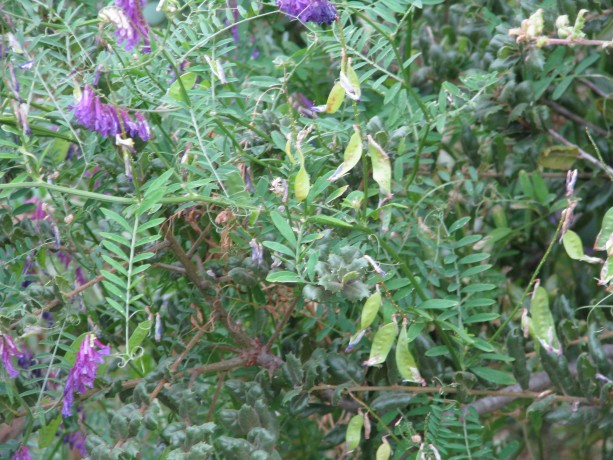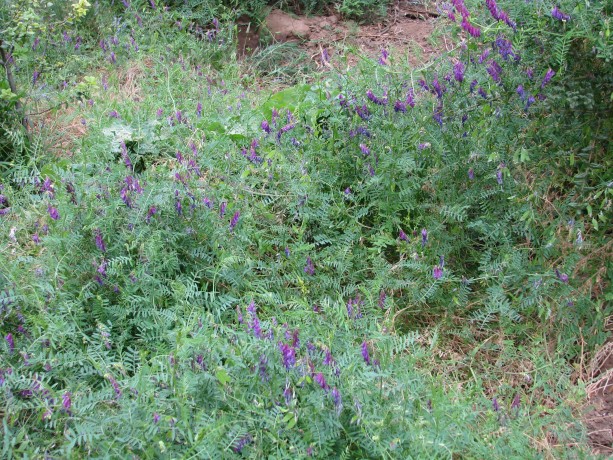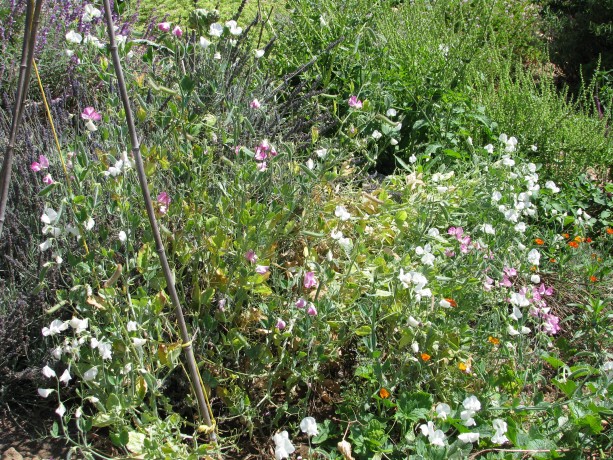Hairy Vetch

Hairy vetch (Vicia villosa), also known as winter vetch is a nitrogen-fixing plant that is used mostly for cover-cropping in monoculture fields. Native to Europe and Asia, it is a winter plant sown in the Fall and, in places where it snows, is killed off with the cold or tilled into fields. When a nitrogen-fixing plant dies or is cut back, roots die and release the nitrogen nodules into the soil. Here is sunny San Diego the vetch thrived since I sowed it in Spring of last year. It is a pretty, vining plant, with lovely dark purple blooms that bees and other pollinators love. It produces pea pods like its edible relative the fava bean, but I wouldn’t eat them. The seeds may be bad browse for livestock as well. The roots help hold soil during winter rains, too.

Vetch can be hard to get rid of because it reseeds easily. It will also climb up bushes, competing with the bush for sunlight. If I didn’t know about the nitrogen-fixing properties and if the bees didn’t like it so much, I’d suspect it of being an invasive.
To control it I take my trusty hand scythe and cut the vetch out of bushes and close to the ground. I leave the vines to decompose and protect seedlings that I plant to take advantage of the newly-enriched soil.

If you don’t want a cover crop that is so aggressive I suggest sowing a mixture of lupine, sweet peas, edible peas and fava beans in the Fall here in Southern California, and again in early Spring. In cold areas check with your farm advisor on when to plant.

2 Comments
Diane
Hi and thanks for reading. What I wrote was that I wouldn’t eat the peas from the hairy vetch plant, which was the subject of that sentence. Garden peas, green and ‘hard’ beans, mesquite pods, lima beans… the list goes on of the edible legumes that we happily grow here in annual and perennial form. There are a lot of vetches out there, some of which are good for human consumption. Hairy vetch, Vicia villosa, or Russian vetch, doesn’t appear to be one of them. The pods could be toxic to humans. Its good to be careful about what specific species you are dealing with as common names can be misleading. Of course the legume family is one of the largest and most helpful of families in that most members can work with certain bacteria in the soil to produce nitrogen nodules in the earth, and that is why they are used as cover crops.
Take care, Diane
G
Incorrect, the pea family is known for being one of the most universally edible (and in my experience, very nice tasting) families.